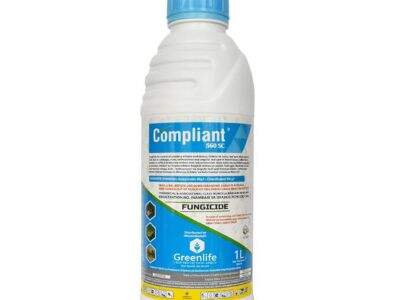If your plants appear sick and you are not getting good growth from your plants, they may have a problem known as Fungal diseases. Fungal diseases grow from small organisms called fungi that are easily reproduced and damage your plants. But fret not; you can discover, treat, and prevent these diseases to your plant's benefit.
Diagnosing and Managing Plant Fungal Diseases
Common symptoms of fungal diseases in plants These include spots on the leaves, wilting, yellowing or curling leaves and rotten stems. If you notice any of these, your plants may be infected with a fungus.
These diseases may be treated with fungicides, products specifically designed to kill fungi. You can get these at garden stores, and they are very easy to use on your plants. Follow the instructions on the label closely to help your plants recover.
Common Fungal Infections: What You Should Know
Some of the fungal diseases your plants can get are powdery mildew, leaf spot, and root rot. Powdery mildew appears as white powdery spots on leaves, whereas leaf spot appears as dark spots on leaves. Root rot is when roots die by affecting them.
These include high humidity, poor air circulation, and overwatering. To avoid these pathogens, place your PLANT GROWTH in a well-ventilated location and water them only when they truly need it.
Preventing Plant Disease: A General Guide
Simple tips for keeping your plants in good health and safe from fungal diseases First, make sure you put your PLANT in soil that drains well to avoid having water pooling around the roots. Like other plants, do not water it from above, it can make it wet and good for fungi to grow.
Monitor your plants regularly for signs of infection, and snip off any diseased leaves or stems immediately so the disease doesn’t spread. As an added precaution, consider topping your plants with organic mulch, which will help retain moisture and prevent fungi from spreading.
Against Fungal Diseases of Plants, the Most Effective Natural Cures
There are multiple methods of combating plant fungal infections naturally if that is your preferred approach. A good way to do this is with neem oil (which is a natural oil that can inhibit fungi). Simply combine the oil with water and spray it onto your plants to protect them against infection.
Baking soda is another natural remedy that has been known to help control powdery mildew and other fungal infections when used in combination with water. Just be sure to try it on a small section of your plant first to ensure it doesn’t damage your plant.
Now that you understand the ways to identify fungal infections sooner, here are some tips on how to treat them effectively:
Treating Garden Plants Sick with Fungal Disease. First, prune out all signs of infection on the plants and dispose of them properly to prevent spread of disease.
Then, water and feed your plants well so that they may recover from the infection. Try a natural fungicide or organic treatment to help combat the disease and restore your plants to health.

 EN
EN
 AR
AR
 BG
BG
 HR
HR
 FR
FR
 DE
DE
 EL
EL
 HI
HI
 IT
IT
 JA
JA
 KO
KO
 PT
PT
 RU
RU
 ES
ES
 TL
TL
 ID
ID
 VI
VI
 TH
TH
 AF
AF
 MS
MS
 SW
SW
 UR
UR
 BN
BN
 CEB
CEB
 GU
GU
 HA
HA
 IG
IG
 KN
KN
 LO
LO
 MR
MR
 SO
SO
 TE
TE
 YO
YO
 ZU
ZU
 ML
ML
 ST
ST
 PS
PS
 SN
SN
 SD
SD
 XH
XH

